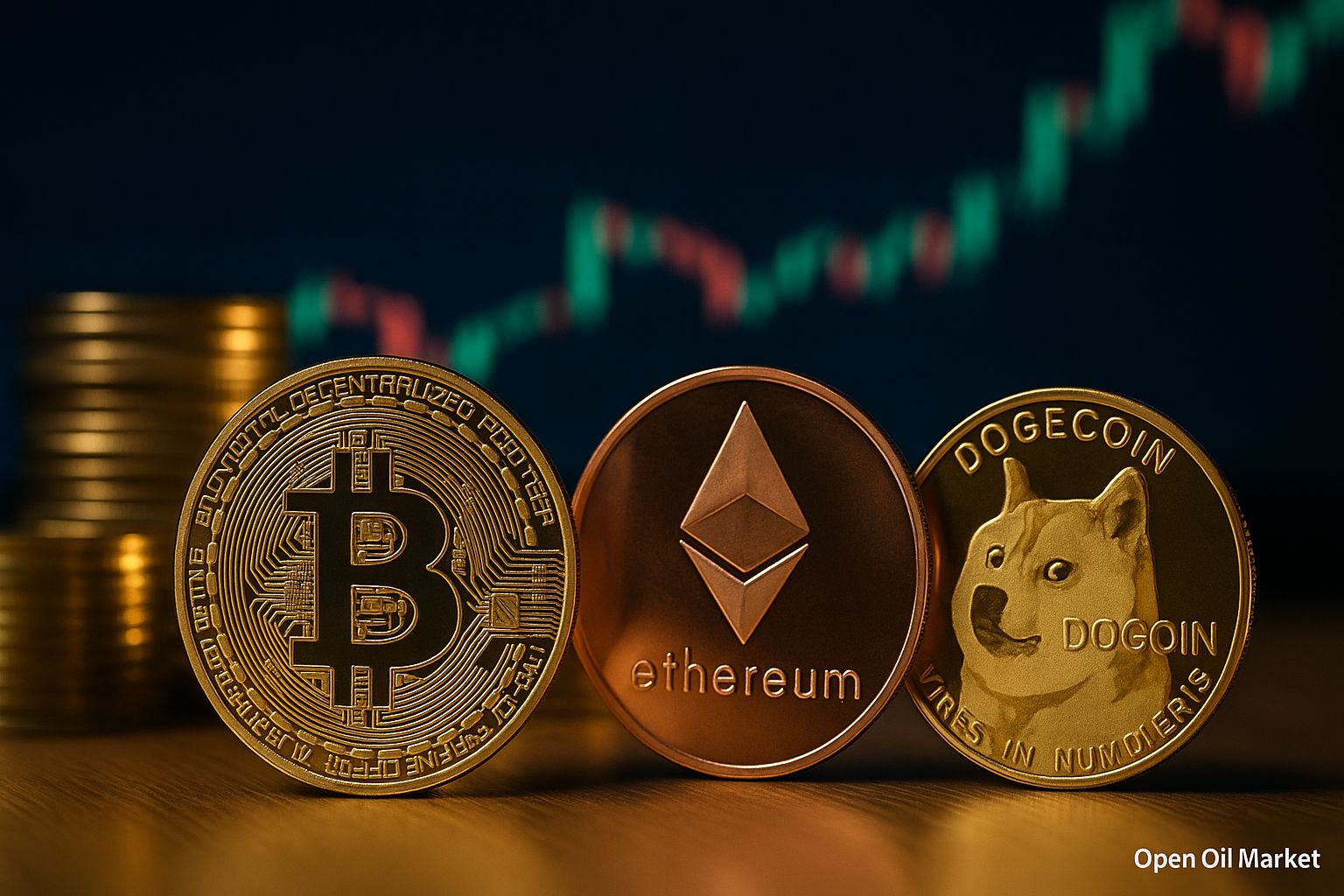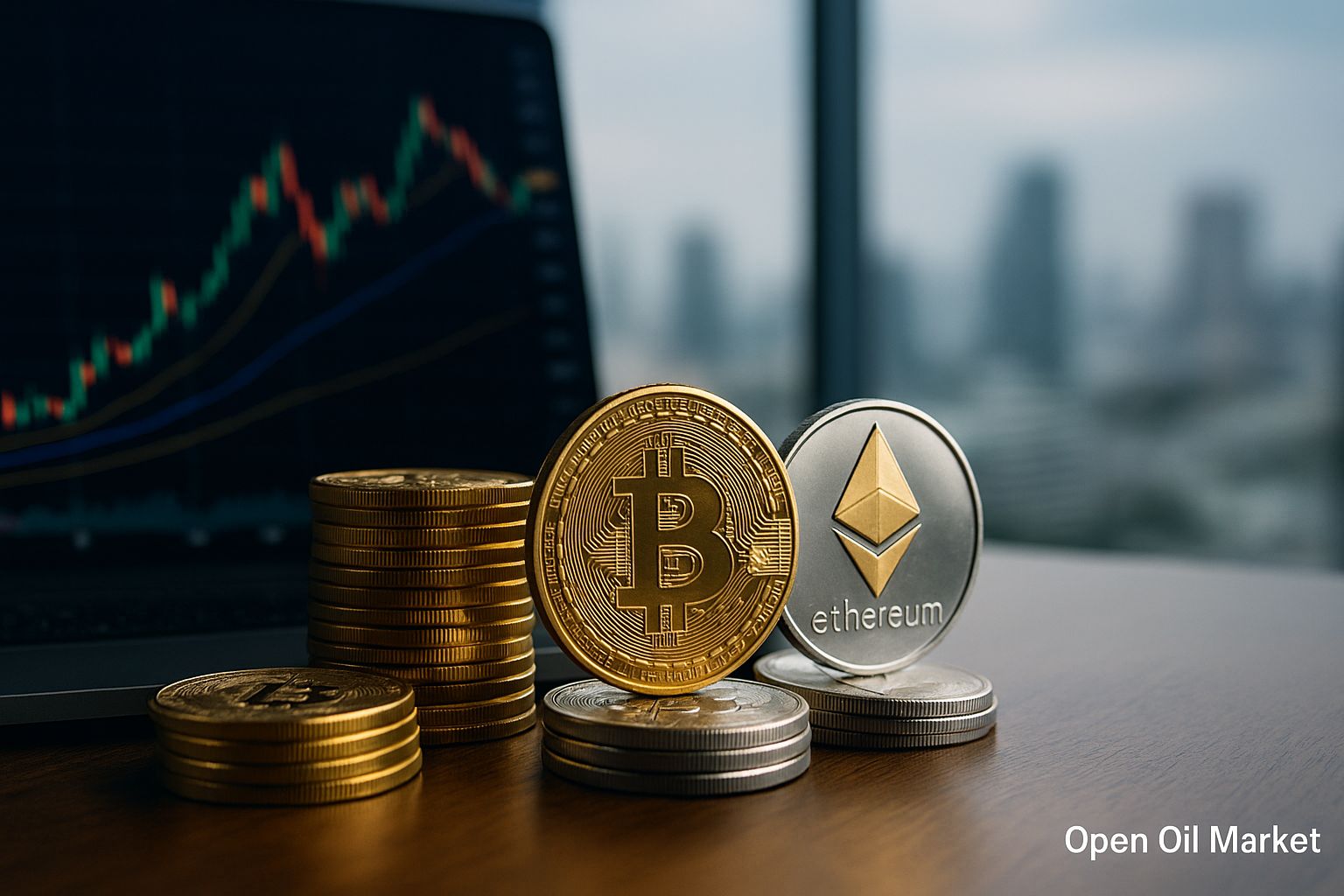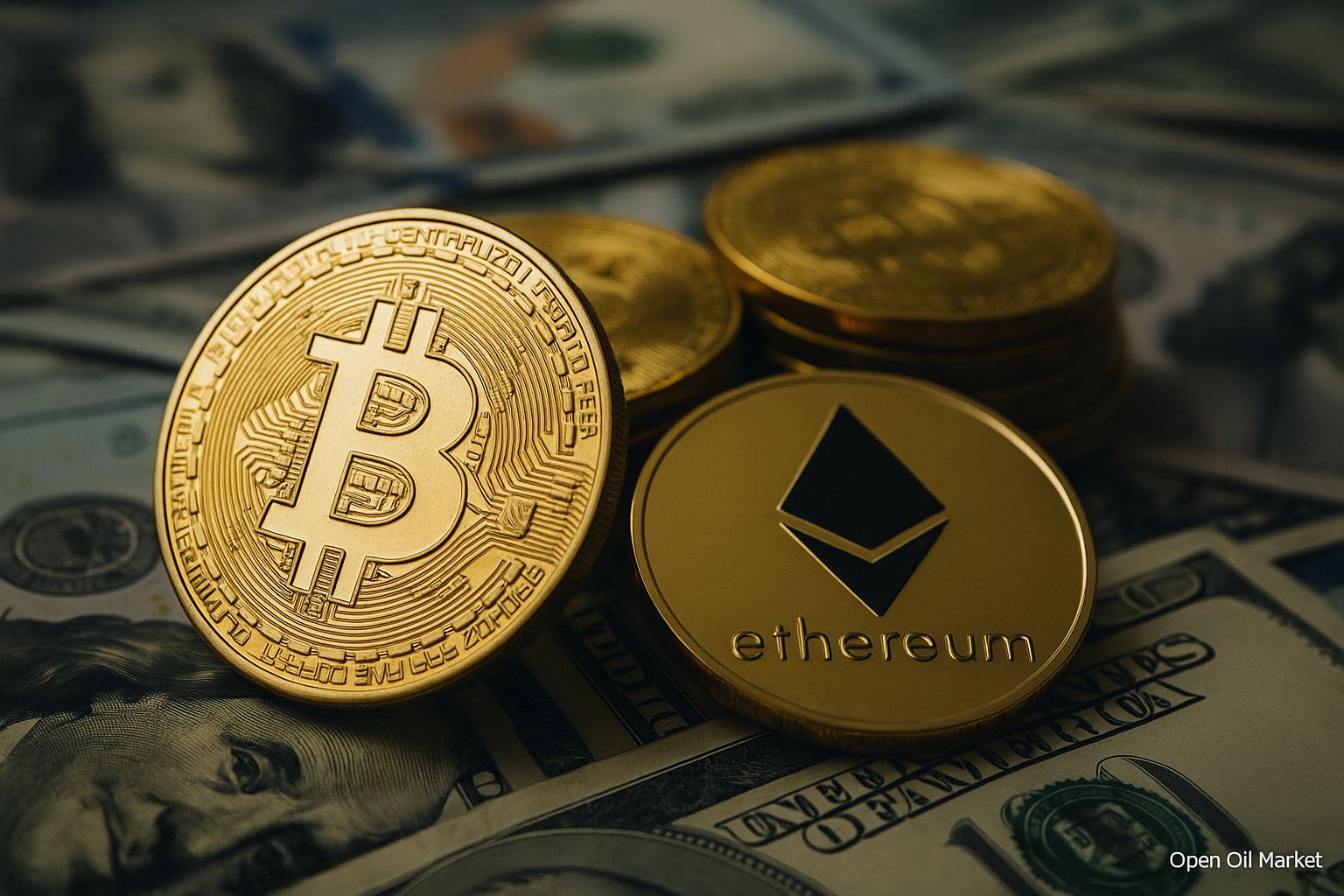
The Cryptocurrency Market Recovers: Bitcoin Stays Above $100,000, Ethereum and Altcoins Rise, Institutional Investors Maintain Confidence. Analysis and Overview of the Top 10 Cryptocurrencies as of November 11, 2025.
The cryptocurrency market is gradually recovering after the correction at the beginning of November: Bitcoin has once again held above the psychological threshold of $100,000, while leading altcoins have stabilized and are following its upward trend. Investors are exhibiting cautious optimism amid improved macroeconomic conditions (the resolution of the U.S. budget crisis and signals of easing Fed policy), yet remain vigilant ahead of the release of essential inflation data. The total market capitalization of cryptocurrencies has returned to approximately $3.6 trillion, recouping a significant portion of recent losses. The Fear and Greed Index remains in the "fear" zone (around 30), reflecting the restrained sentiment among market participants.
Bitcoin Recovers After the Correction
The flagship cryptocurrency Bitcoin (BTC) has partially reclaimed losses following a sharp decline at the beginning of the month. On the night of November 5, the BTC price dropped below $100,000 (to approximately $98,000) for the first time since summer, triggering a wave of liquidation of positions. This decline occurred in the context of tightening monetary policy: the Fed hinted at the possibility of an interest rate hike in December, and the People's Bank of China reduced liquidity, prompting a capital outflow from risky assets toward the dollar and gold.
By mid-November, Bitcoin swiftly returned above the significant level thanks to improved news — the prolonged U.S. government shutdown came to an end, alleviating political uncertainty. Currently, BTC is trading around $106,000, approximately 15% below its all-time high of around $126,000 reached in early October. The market is consolidating within the range of $100,000 to $110,000: resistance is seen at $110,000, while support is around $100,000. Bitcoin's dominance remains at about 60% of the total market capitalization, underscoring its leading role in the cryptocurrency market.
Ethereum and Altcoins Gain Momentum
The second-largest cryptocurrency by market capitalization, Ethereum (ETH), has also returned to growth. The ETH price is hovering around $3,600, rebounding from last week's lows (when Ethereum fell to approximately $3,100). Current values are about 25% below the summer peak (nearly $5,000 in August). Ethereum continues to serve as the foundational platform for decentralized finance (DeFi) and a plethora of other blockchain applications. Following its transition to Proof-of-Stake in 2022, Ethereum has become more energy-efficient, and the fee burning mechanism makes its token a potentially deflationary asset under high demand.
Most other altcoins are also in the "green zone," gradually recovering from recent declines. Major coins such as Binance Coin (BNB), XRP, Cardano (ADA), and Solana (SOL) are confidently rising alongside the market leader. The meme cryptocurrency Dogecoin (DOGE) remains in the top ten. Among second-tier altcoins, sharp spikes are being observed: for instance, the price of Decred (DCR) surged approximately 70% in a single day, reflecting a return of speculative activity (though such rapid growth is typically followed by a correction).
Macroeconomic Background: Rates and Inflation
External macro factors continue to affect the cryptocurrency market. This autumn, central bank rhetoric has become more stringent: the U.S. Fed did not lower interest rates at its last meeting and indicated further increases, while the People's Bank of China has limited liquidity. These measures have heightened concerns about economic overheating and led to a sell-off of risky assets — bond yields have risen, the dollar has strengthened, negatively impacting digital assets.
The conclusion of the budget crisis in the U.S. has somewhat improved sentiment, but upcoming data now holds critical importance. This week, the U.S. Consumer Price Index (CPI) for October will be released: if inflation continues to decelerate (following 3% year-on-year in September), expectations for rate cuts in 2025 will intensify; conversely, unexpected increases in the index will compel the Fed to maintain a tighter stance for longer. The macroeconomic landscape remains uncertain, meaning each new signal from regulators or economic statistics could significantly influence the cryptocurrency market.
Regulation and Global Adoption
The regulatory environment is becoming more favorable for the industry. The Trump administration in the U.S. has taken a supportive stance towards cryptocurrencies: laws clarifying the legal status of digital assets have been enacted, and several industry players have received pardons. In the European Union, the MiCA framework law is taking effect, establishing unified rules for the crypto business. Crypto hubs like the UAE and Singapore continue to attract blockchain projects with soft regulations and tax incentives.
Certain court rulings and state initiatives are also boosting investor confidence. Ripple's recent victory in court against the SEC has eliminated significant uncertainty surrounding XRP and set a positive precedent for the industry. Additionally, the Kazakh authorities have announced plans to create a national crypto reserve worth up to $1 billion, demonstrating growing interest in digital assets at the state level. In summary, these factors are creating a positive backdrop for further developments in the cryptocurrency market.
Institutional Interest and Capital Inflow
Since 2024, following the approval of the first spot Bitcoin ETFs in the U.S., interest from large investors in cryptocurrencies has surged. At the end of October, there was a record influx of funds into crypto funds — about $450 million in a week (a substantial part of which was directed to the BlackRock Bitcoin ETF). Even the recent downturn did not compel institutional investors to exit their positions en masse: the total volume of assets under the management of the largest crypto funds remains close to its all-time highs. This signals the confidence of large players and instills stability in the market. The increase in institutional capital's share enhances liquidity and gradually reduces volatility, strengthening trust in digital assets across all investor categories.
Top 10 Most Popular Cryptocurrencies
Below are the ten most popular and significant cryptocurrencies at the moment, along with brief characteristics of each:
- Bitcoin (BTC) — The first and largest cryptocurrency, often referred to as "digital gold." Launched in 2009, it has become a popular store of value and a hedge against inflation. Limited issuance (21 million coins) ensures Bitcoin's dominance in the market, making it the primary price benchmark.
- Ethereum (ETH) — The second largest cryptocurrency by market capitalization and the leading platform for smart contracts. It underlies DeFi and many other blockchain applications, with the ETH token used to pay network fees. The transition to Proof-of-Stake has improved Ethereum's energy efficiency, and the burning of a portion of the fees makes it a potentially deflationary asset under high demand.
- Tether (USDT) — The largest stablecoin, pegged to the U.S. dollar (1 USDT ≈ $1). It serves as the digital equivalent of the dollar in the crypto market and is widely used by traders to hedge against volatility and transfer funds between exchanges. The issuance of USDT is backed by reserves, maintaining the token's peg to $1.
- Binance Coin (BNB) — The internal token of the Binance exchange and the native asset of the BNB Chain blockchain. It is used to pay commissions on the exchange (with discounts) and in services within the Binance ecosystem. Given Binance's scale, BNB consistently ranks among the market leaders by capitalization.
- USD Coin (USDC) — The second-largest stablecoin, pegged to the dollar 1:1. Issued by the Centre consortium (Circle and Coinbase) with an emphasis on transparency of reserves. USDC is actively used in decentralized finance and for settlements between platforms, ensuring a stable exchange rate around $1.
- XRP (Ripple) — The token of the Ripple payment system, designed for fast and cheap international transfers. It serves as a "bridge" between different fiat currencies, targeting banks and payment networks. A recent court ruling in favor of Ripple against the SEC has eliminated regulatory risks and increased interest in XRP.
- Cardano (ADA) — A blockchain platform developed with a scientific approach and rigorous code verification. It enables the issuance of smart contracts and decentralized applications, using the Ouroboros (Proof-of-Stake) consensus algorithm. The ADA token is used for staking and transaction fees.
- Solana (SOL) — A high-speed blockchain with low fees, popular among DeFi applications and NFT platforms. It can process thousands of transactions per second, attracting developers of decentralized services. Despite network issues in 2022, Solana has recovered and once again ranks among the top crypto assets by capitalization.
- Dogecoin (DOGE) — The most well-known meme cryptocurrency, which started as a joke but gained immense popularity. It has unlimited issuance and high inflation, yet due to viral spread and support from enthusiasts, it continues to maintain high positions. It is used for quick small online payments.
- Tron (TRX) — A blockchain platform with high throughput, widely used for issuing and transferring stablecoins (a substantial portion of USDT operates on Tron due to low fees). The TRX token is used for transaction payments and for powering decentralized applications within the Tron ecosystem.
In conclusion, by mid-November 2025, the cryptocurrency market is confidently emerging from recent turmoil. Bitcoin and leading altcoins have recouped a significant part of their declines and are once again targeting local highs, while the growing presence of institutional investors adds stability to the market. Investors remain attentive to regulatory actions and macroeconomic indicators — which will largely determine whether the current recovery will develop into a sustainable market growth by the year-end.




